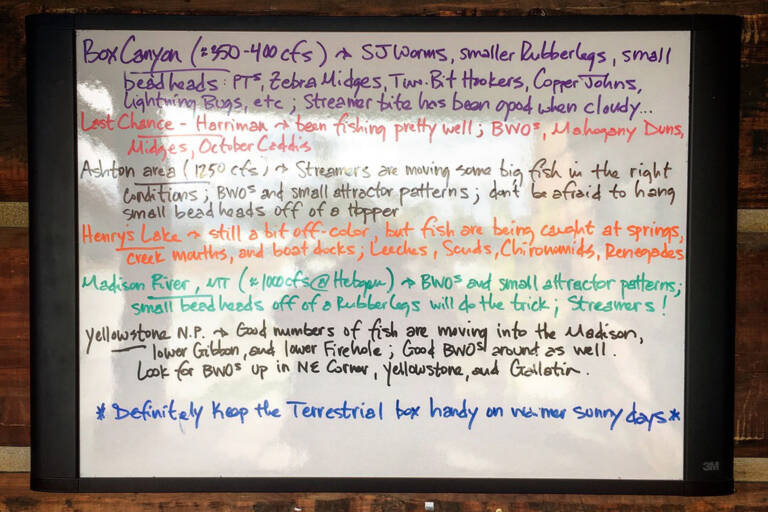Trout Hunter Lodge on the Henry's Fork
Fish for trout on Rene Harrop’s favourite river
Since 1999 TroutHunter has raised the bar for hospitality on the fabled Henry’s Fork of the Snake River in Idaho – a technical trout fisherman’s dream destination.
We’ve been to the Henry’s Fork on a few different occasions and have stayed at the TroutHunter Lodge. The surroundings, the prolific fishery, the history and culture all make for a unique experience. And if you’re lucky, like we’ve been, you might meet fly fishing legends such as Rene Harrop. Rene fishes the Henry’s Fork throughout the entire season as it’s his favourite trout river. And that says a LOT!
The legendary TroutHunter lodge strives to provide aspirational and accomplished fly fisherman with the ultimate in service. The lodge is situated in Island Park, Idaho, and it incorporates riverfront lodging, exceptional guides, a first-rate fly shop, and an acclaimed bar & grill.
The Fishing
The Henrys Fork meanders some 200 kilometers through beautiful highland meadows in the northeastern corner of Idaho, USA, before merging with the Snake River. Its upper drainage near Big Spring and Henrys Lake – and especially the area around Island Park, is the source of not only key individuals in fly fishing history, but also strains of thought and theory, nymphing and dry fly technique innovations, game-changing fly patterns, and timeless fly fishing literature.
The Henry’s Fork is a near-mythical Idaho prairie river, which has come to take on an aura of its own and slowly but surely found its well-deserved place in international fly fishing lore.
Having been fished by American presidents, literary icons such as Jack and Ernest Hemingway – and fly fishing industry legends such as John Gierach and René Harrop, few rivers on the face of this earth has attracted as much attention as the Henrys Fork. Additionally, the whole area surrounding the river has come to evolve so heavily around fly fishing that it is now completely engrained in the local culture and mentality.
To many dry fly fishermen, the Henrys Fork is like a Mecca or a Graceland, and it has evolved into one of those destinations that is commonly referred to as a bucket-list-river. And to have caught a Henrys River trout during one of the complex blanket hatches that come off the river throughout the summer months is considered a truly meriting feat.

If there is a dry fly exam to be taken anywhere on the face of this earth, it’s on the Henry’s Fork. The river is quite shallow, slow flowing, and nutrient rich. The bottom structure varies from silty to gravelly with scattered rocks and myriads of swirling weed patches. It’s the perfect habitat, not only for trout, but also for a rich variety of aquatic insects (and terrestrials) that provide an abundant food source for the dominant species in the river – the rainbow trout. Catching these fish can be a testing experience, however. The dense hatches, their complexity, and the fact that the trout key in on certain hatch stages and become extremely selective, make it a challenge to hook up. Several other factors contribute as well. The trout, for some reason, oftentimes prefer to feed on the smallest of all insects in the river – like midges and blue duns in sizes ranging from 20 – 26, which can only be dead-drifted with success using long and ultra-thin tippets (something that makes landing a decent-sized rainbow trout in the weed-littered river risky business). Getting the drifts right, in return, requires not only skillful casting. Because of the amount of weed patches and the many cross currents and current spins, great mending skills are required to get the drifts right.
Fishing during the fall and winter hatches, like we’ve done on a few occasions, tends to make things even more challenging on the Henrys Fork. At this time of year, you could be struggling with ice in the guides and, not least, powerful winds that sweep chillingly downstream though the unprotected meadows and prairies, where very little lee can be found. At this time of year, however, there might be some big migratory brown trout around, and – although Henrys Fork is mainly about dry fly purism, it is a great opportunity to mix things up and try a big articulated streamer.
We could spend lots of time talking about the gear, techniques, and flies used on the Henrys Fork. But, seeing as we’re no experts, it might be better to leave this with some of the legends that fish Henrys Fork on a regular basis – people like, for instance, René Harrop, which have become synonym with Henrys Fork. It’s people like Rene – and the many fly fishing pioneers that have spent countless hours along the river’s banks observing, theorizing, and fishing – that know about how to successfully target its trout.
The primary native fish in Henrys Fork, aside from mountain whitefish, is Yellowstone cutthroat trout. Rainbow trout and brook trout were introduced in the late 1800s and during the 1980s brown trout followed. The dominant species in the river these days is rainbow trout, which – unfortunately, has almost completely outcompeted the native cutthroat trout.
The Lodge
While visiting the Henry’s Fork one shouldn’t miss out on visiting the mythical Trouthunter Lodge, browse through its fly shop and eat a bison burger at the restaurant and bar. For variation, Henrys Lake and Hebgen Lake provide spectacular stillwater fly fishing for cutthroat trout, brook trout and rainbow trout. Furthermore, the otherworldly and spectacularly beautiful Yellowstone National Park, which is situated in the bordering state of Wyoming, should not be missed. It’s less than an hours’ drive from Island Park.
BOOKING INQUIRY
*Disclaimer: In the Loop Magazine is in no way liable for the execution of trips booked via our contact form. In the
Loop Magazine merely liaises and forwards information requests.
All bookings and related services are handled by the actual lodges and guide agencies.









